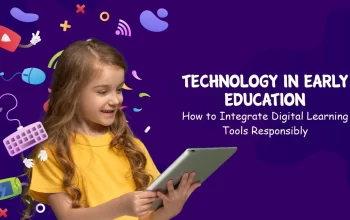In today’s digital age, technology has become an integral part of education. However, integrating it into early education requires a thoughtful and responsible approach. This article explores effective ways to incorporate digital learning tools in early childhood settings.
Understanding the Role of Technology in Early Learning
Technology, when used appropriately, can enhance learning experiences for young children. It offers interactive and engaging ways to introduce concepts and skills. However, it’s crucial to balance screen time with traditional learning methods.
Selecting Age-Appropriate Digital Tools
Choosing the right digital tools is key. Opt for apps and programs designed for early learners, focusing on developmentally appropriate content. These tools should complement the curriculum, not replace hands-on activities.
Creating a Blended Learning Environment
A blended approach is effective in early education. Combine technology with traditional learning to offer a well-rounded experience. For instance, use a storytelling app to complement a reading session.
Encouraging Active Participation
Use technology to encourage active, not passive, engagement. Interactive games and activities that require problem-solving and creative thinking are more beneficial than passive video watching.
Involving Parents and Caregivers
Educate parents and caregivers about the digital tools used in the classroom. Provide guidelines on managing screen time at home and suggest educational apps that align with classroom learning.
Monitoring Screen Time and Content
It’s important to monitor both the amount of screen time and the content. Limit screen use in early education to a reasonable amount and ensure the content is educational and age-appropriate.
Training Educators
Equip educators with the necessary training to integrate technology effectively. They should be skilled in choosing the right tools and incorporating them into their teaching in meaningful ways.
Evaluating the Impact
Regularly assess the impact of technology on learning outcomes. Adjust the approach based on feedback and observations to ensure its meeting the educational needs of the children.
Responsible integration of digital learning tools in early education can offer dynamic and enriching learning experiences. It’s about finding the right balance and ensuring technology serves as a tool to enhance, not overshadow, the fundamental aspects of early learning.

